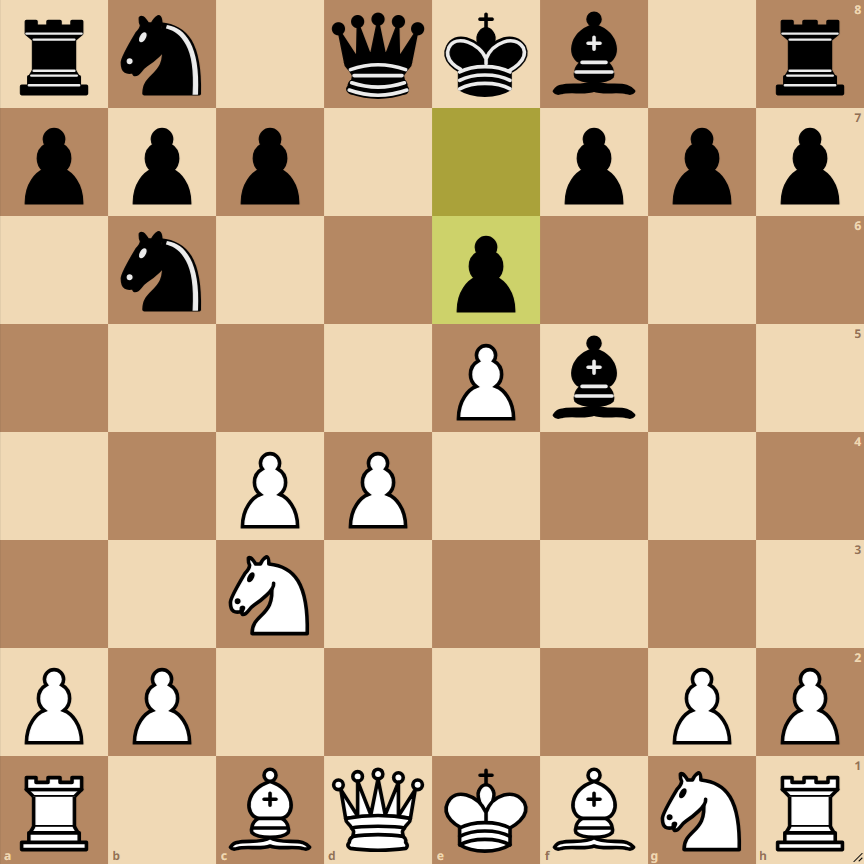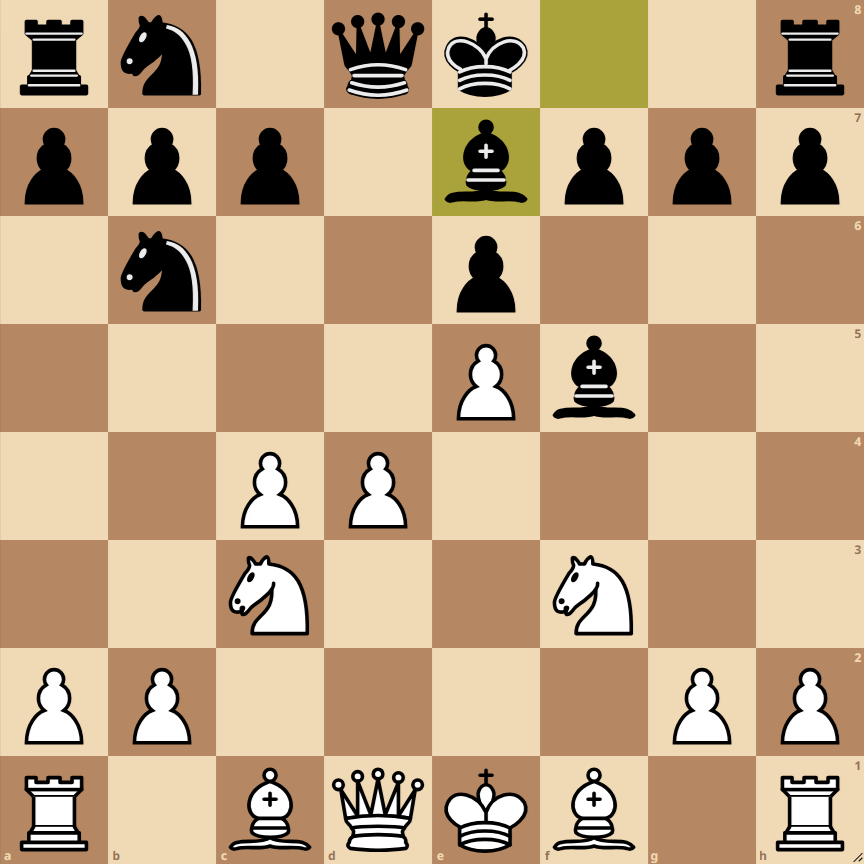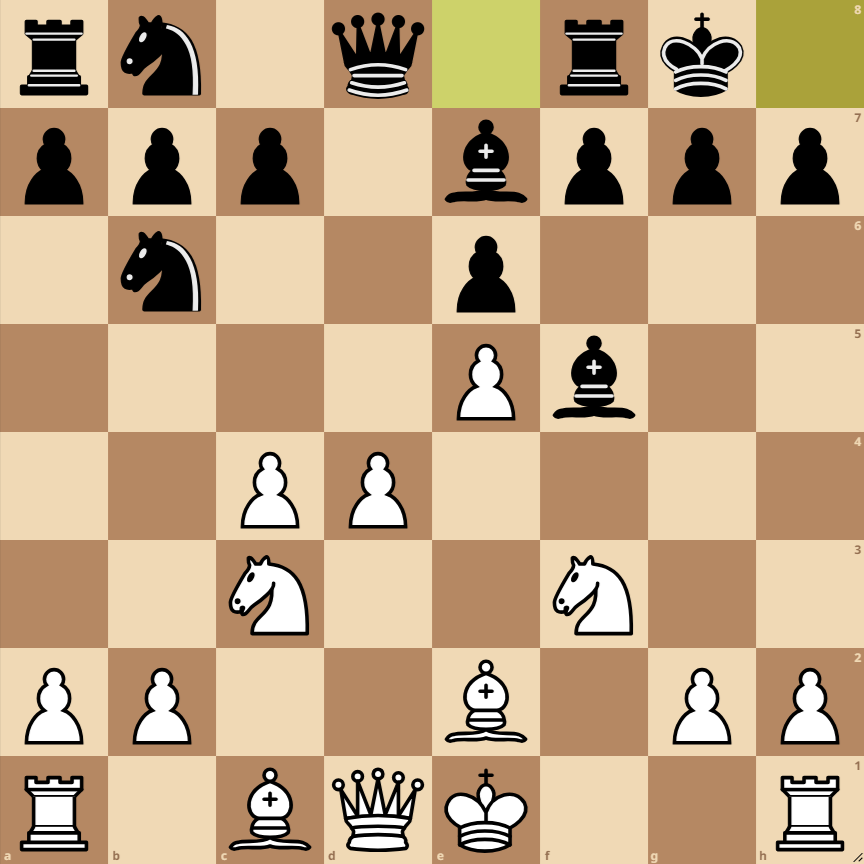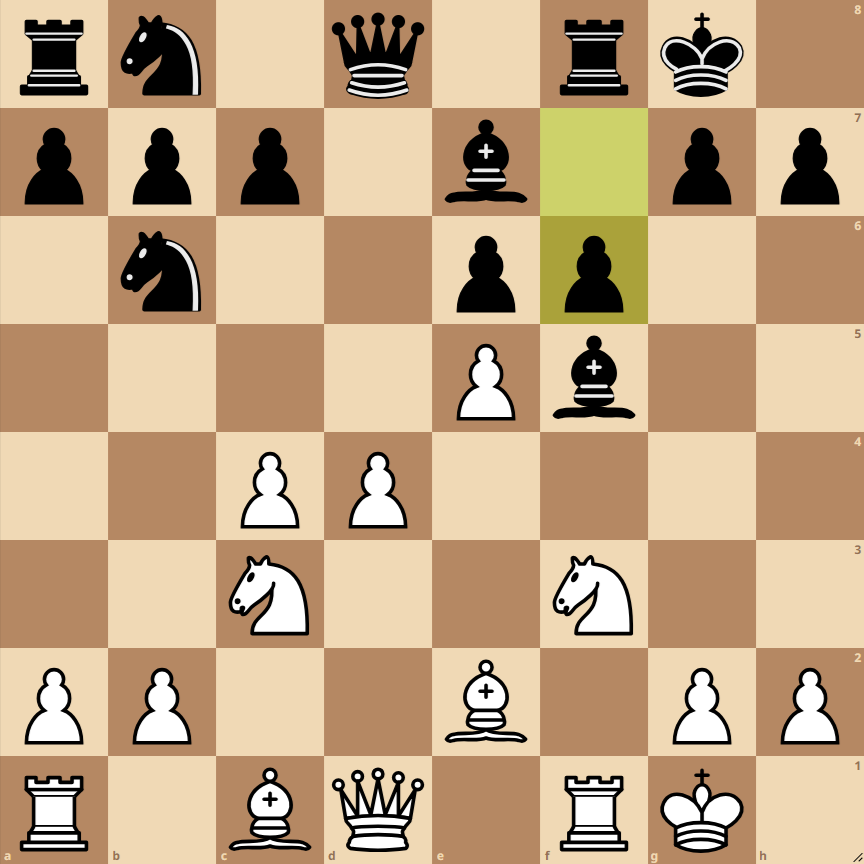How to Play the Alekhine Defense: Four Pawns Attack, Korchnoi Variation
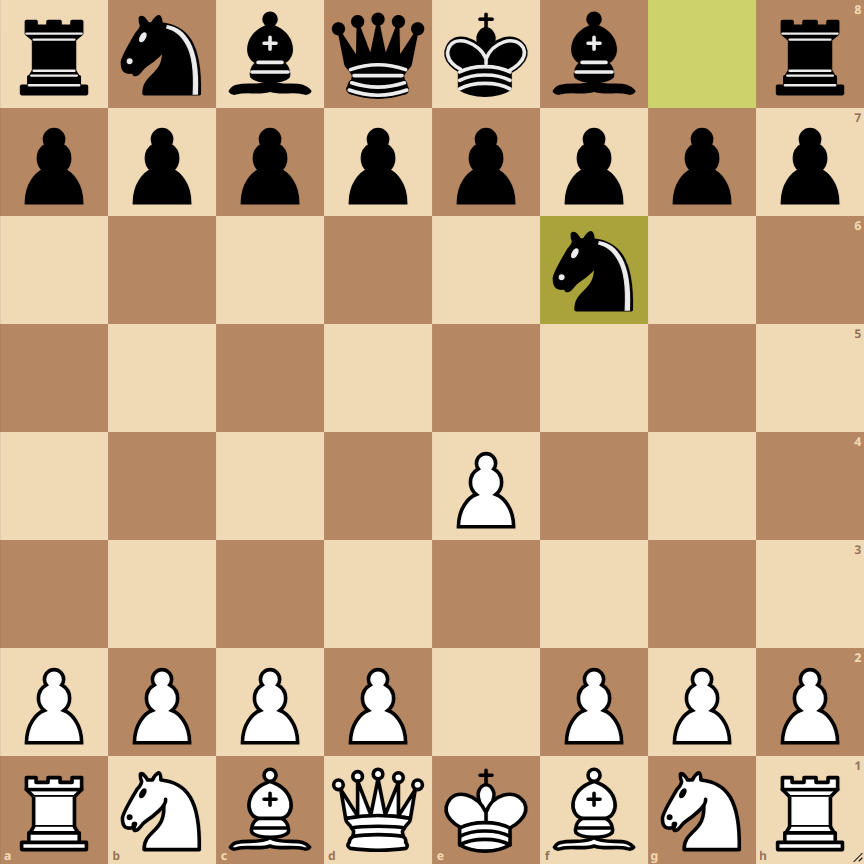
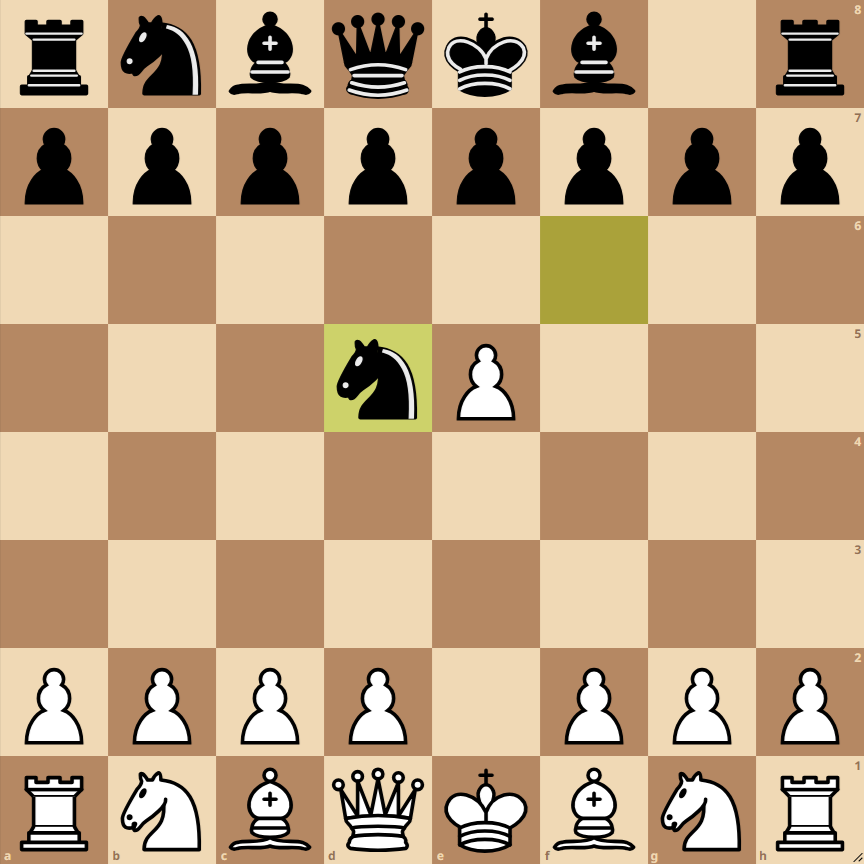
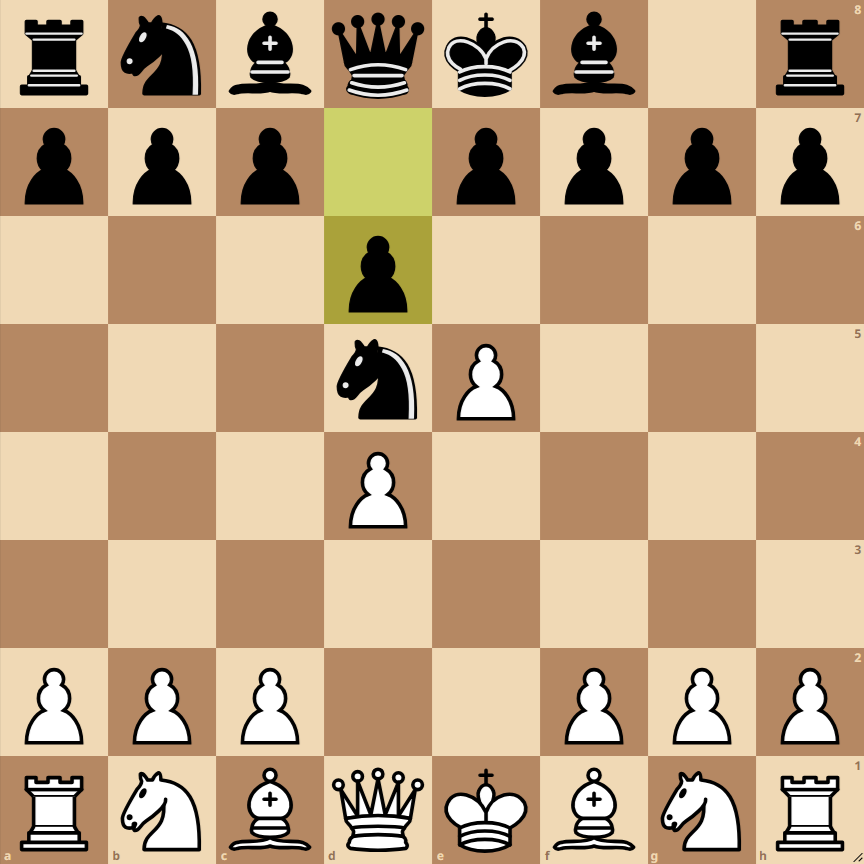
- 1. e4 Nf6: White starts by controlling the center, while Black responds with the knight, challenging the e4 pawn.
- 2. e5 Nd5: White advances the pawn to gain space and attack the knight, which relocates to d5.
- 3. d4 d6: White continues to strengthen the center. Black responds, threatening the advanced white pawn on e5.
- 4. c4 Nb6: White supports the center and prepares the development of their pieces, while the black knight retreats.
- 5. f4 dxe5: White further strengthens the center and prepares for a potential attack. Black captures the pawn on e5.
- 6. fxe5 Af5: White recaptures on e5, maintaining a strong center. Black develops the bishop, attacking the pawn on c4.
- 7. Nc3 e6: White develops another knight, controlling the center. Black prepares the development of their pieces and a possible kingside castling.
- 8. Nf3 Be7: White continues piece development, focusing on central control. Black develops the bishop, aiming for kingside castling.
- 9. Be2 O-O: White prepares castling and connects the bishops. Black castles, seeking safety for their king.
- 10. O-O f6: White completes the castling. Black responds by breaking the center, attempting to destabilize the white pawn structure.
Variations of the Alekhine Defense: Four Pawns Attack, Korchnoi Variation
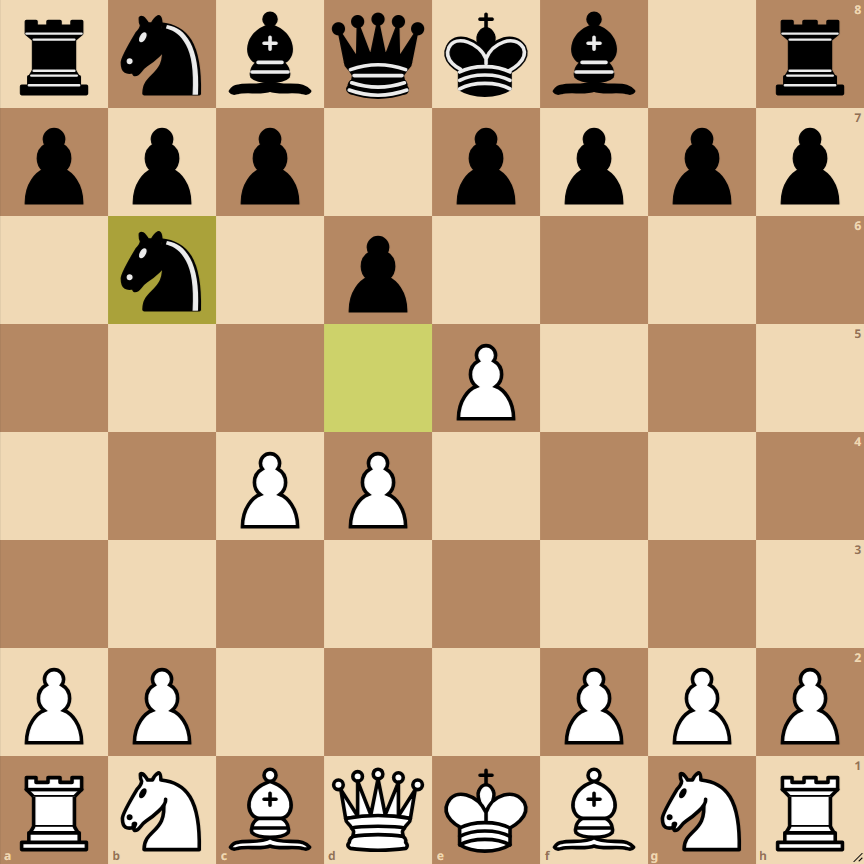
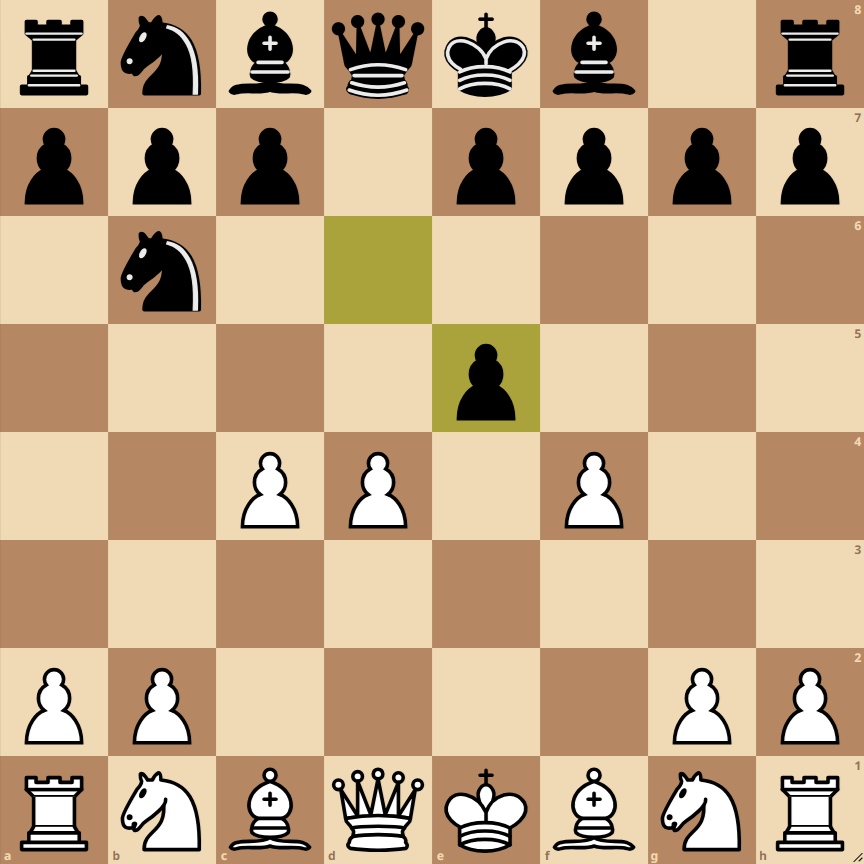
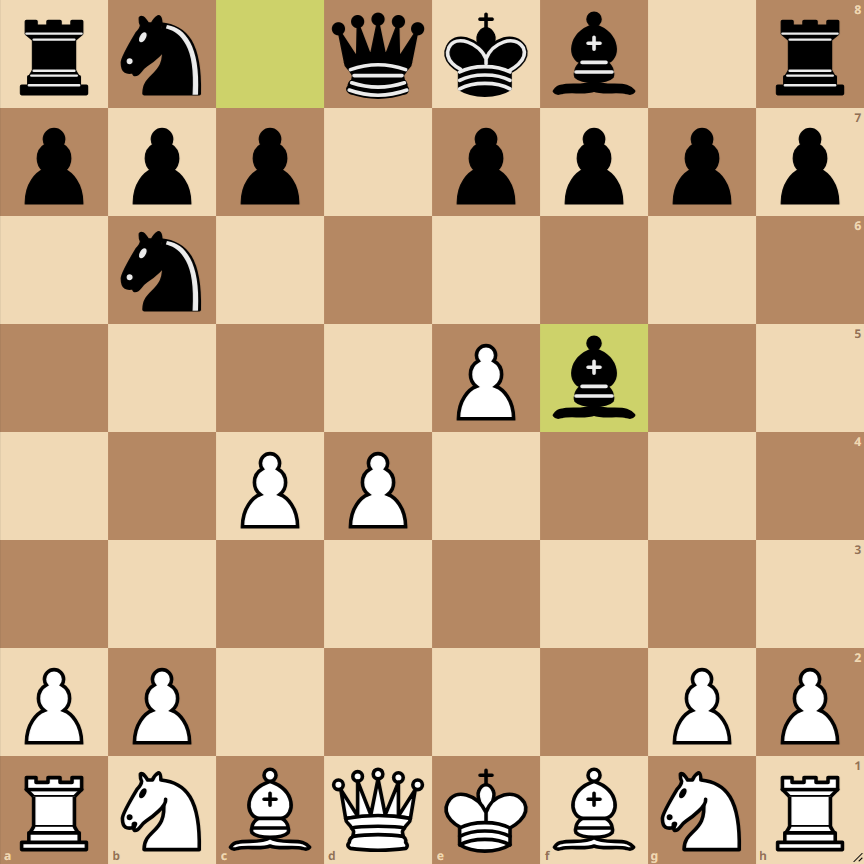
1. … e5
In this variation, Black chooses not to follow the main path and plays e5, directly challenging the white center from the beginning.
3. … e6
An alternative for Black instead of d6, aiming for a more conservative development and preparing the advance …d5.
5. … g6
Instead of capturing on e5, Black can opt to fianchetto their king’s bishop, aiming for a more positional game.
Alekhine Defense: Four Pawns Attack – Korchnoi Variation
Current Position: After 10…f6
1. e4 Nf6 2. e5 Nd5 3. d4 d6 4. c4 Nb6 5. f4 dxe5 6. fxe5 Af5 7. Nc3 e6 8. Nf3 Be7 9. Be2 O-O 10. O-O f6
In this phase of the Alekhine Defense, Korchnoi Variation of the Four Pawns Attack, White has established a solid pawn center and is ready to initiate more aggressive actions. Meanwhile, Black has actively developed their pieces, aiming to counterattack in the center and on the kingside flank.
Strategy and Tactics for White:
- Control of the Center: White has strong control of the center with pawns on d4, e5, and c4. This provides space and maneuvering options for their pieces.
- Development and King Safety: With minor pieces developed and the king castled, White is secure to start offensive operations.
- Pressure on the Kingside: The pawn advances on the kingside (f4 and e5) create opportunities to attack the Black king’s position.
Next Moves:
- exf6: This capture opens up the “f” file and potentially disrupts the Black king’s pawn structure. It also paves the way for an attack against the king.
- Ae3 or Af4: These moves develop the light-squared bishop, increasing pressure in the center and on the kingside. The bishop on e3 or f4 can support pawn advances or combined attacks with other pieces.
Strategy and Tactics for Black:
- Counterattack in the Center: Black should look for opportunities to counterattack in the center and challenge White’s control.
- Play on the Kingside: With the White king potentially vulnerable, Black may consider operations on the kingside, especially if White overextends.
- Exploit Weaknesses: If White advances their pawns too aggressively, they may leave weaknesses behind. Black should be alert to exploit these opportunities.
- Active Defense: Given the aggressive nature of the Four Pawns Attack, Black should maintain a solid yet active defense, seeking tactical and counterattacking chances.
In summary, White should aim to expand their spatial advantage and launch an attack on the kingside, while Black should focus on challenging the center and seeking tactical opportunities. White’s choice between exf6, Ae3, or Af4 will dictate the tone of the next phase of the game.
